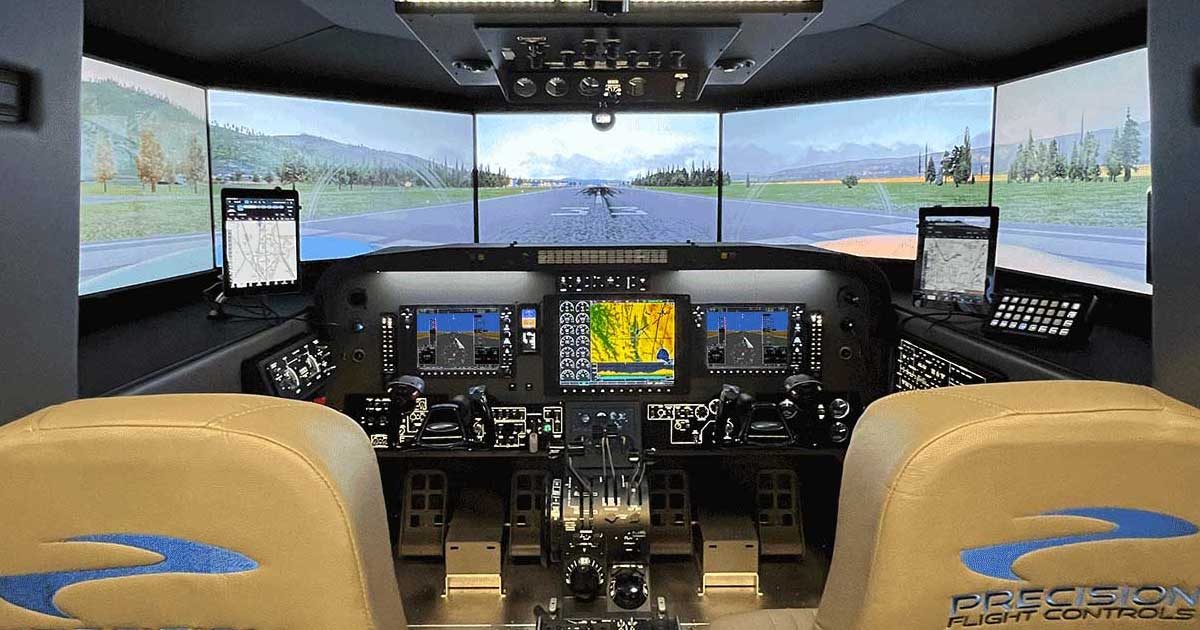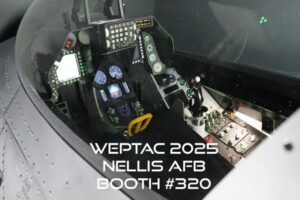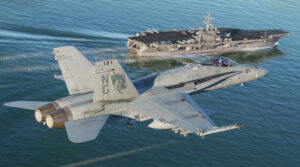Introduction
Flight simulators have become an indispensable tool in pilot training. They enable early exposure to basics and advanced training tasks at lower cost and risk before taking the next step and flying the airplane. These simulators offer a safe and cost-effective platform to practice a wide range of skills and scenarios. This article covers the various aspects of flight that can be improved using Precision Flight Controls simulators, from fundamental skills to advanced techniques and procedures.
Fundamental Skills
Basic Flight Maneuvers
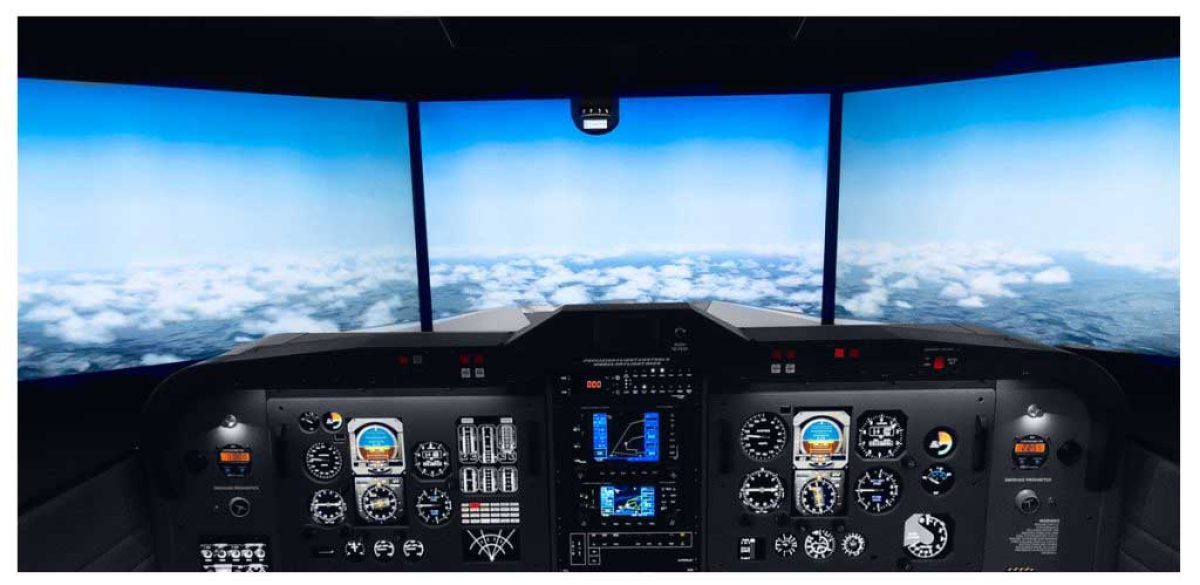
Basic flight maneuvers are the foundation of piloting skills, enabling a pilot to confidently and safely control an aircraft in various situations. Mastering these fundamental procedures and techniques is crucial for both new and experienced pilots, as they form the basis for more advanced maneuvers and ensure optimal performance during flights. Utilizing a flight simulator to practice and refine these essential skills provides an efficient, cost-effective, and low-risk training environment.
Straight and level flight: Practice maintaining altitude, heading, and airspeed, while learning how to trim the aircraft properly.
Climbs and descents: Master various climb and descent profiles, pitch and power settings, and practice managing airspeed and altitude changes.
Turns: Learn to perform coordinated, standard-rate, and steep turns while maintaining altitude and airspeed.
A simulator allows pilots to practice these fundamental skills repeatedly without the added pressure and cost of real-world flight time.
Stalls and Slow Flight
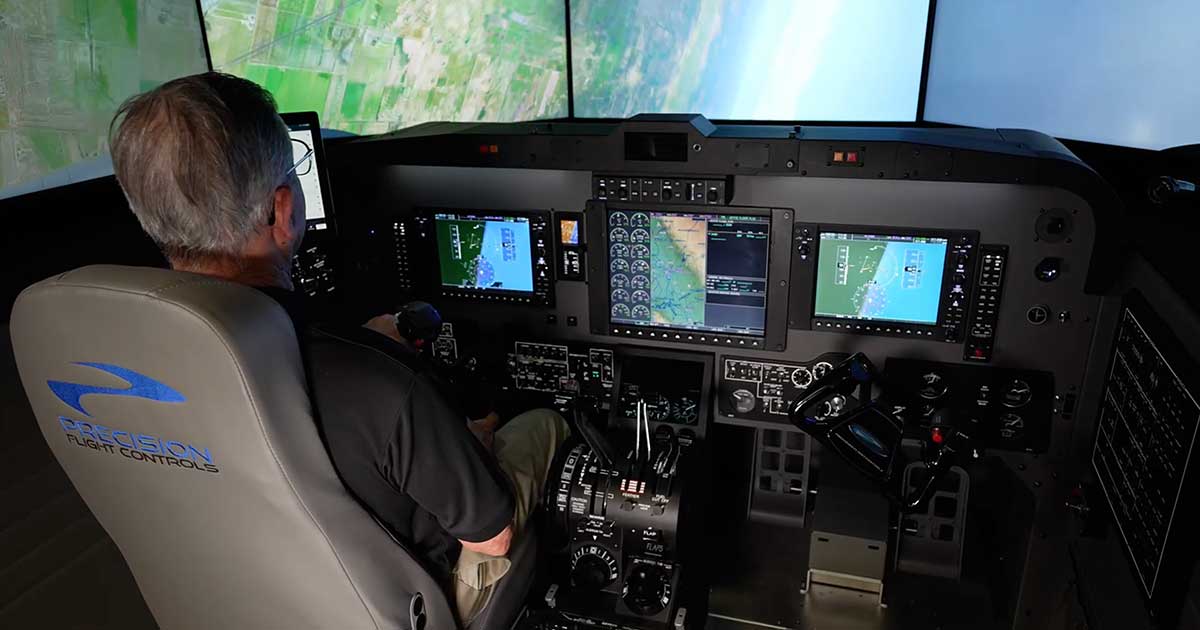
Stalls and slow flight training are essential for pilots to develop a deep understanding of an aircraft’s behavior and limitations at low airspeeds. Mastering these skills helps pilots maintain control during critical phases of flight, such as takeoff, approach, and landing and maneuvering. By practicing stalls and slow flight in a simulator, pilots can gain valuable experience and build their confidence in handling these situations, all while mitigating the risks associated with conducting such training in a real-world environment.
Power-on and power-off stalls: Understand the warning signs, recovery techniques, and how to avoid inadvertent stalls. Many new pilots have apprehension about learning stall recovery, the simulator can eliminate some of that apprehension before the student has to experience it in the aircraft.
Slow flight: Learn to control the aircraft at or near stall speed, practicing proper coordination, and maintaining altitude.
Simulators provide a safe environment to practice these critical maneuvers without the risks associated with real-world stalls and slow flight.
Takeoffs and Landings
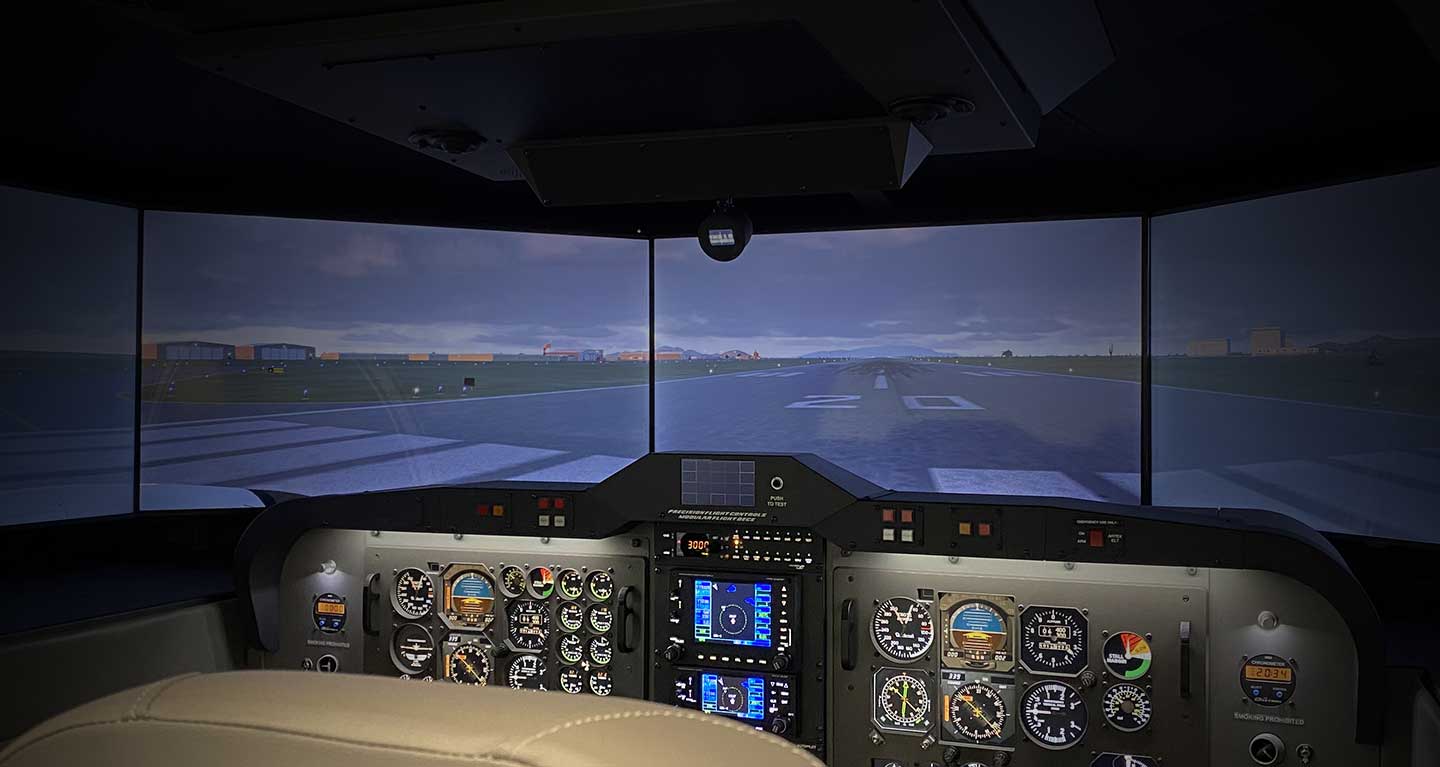
Takeoffs and landings are critical phases of flight that require precision, technique, and situational awareness from pilots. Ensuring a safe departure and arrival is paramount, as the majority of aviation incidents occur during these stages. Becoming proficient in handling diverse runway conditions, environments, and crosswinds is vital to a pilot’s ability to safely operate an aircraft. Flight simulators provide an ideal platform to practice and refine these skills, allowing pilots to gain valuable experience in a controlled and risk-free setting, while also preserving the aircraft from potential wear and tear.
Normal, short field, and soft field takeoffs and landings: Master various techniques required for different runway conditions and environments. These procedures and techniques can be practiced in a simulator to enable better learning when in the aircraft.
Crosswind takeoffs and landings: Practice dealing with crosswinds, using the correct control inputs, and maintaining runway alignment. Crosswind landings are quite difficult for some students. Precision Flight Controls DCX and MFD platforms provide very effective and realistic platforms for teaching the procedures and techniques associated with crosswind landings.
Go-arounds: Learn to recognize and execute a go-around when a landing is not safe or advisable.
Simulators offer pilots the opportunity to practice these techniques in various conditions, without the wear and tear on an actual aircraft.
Emergency Procedures
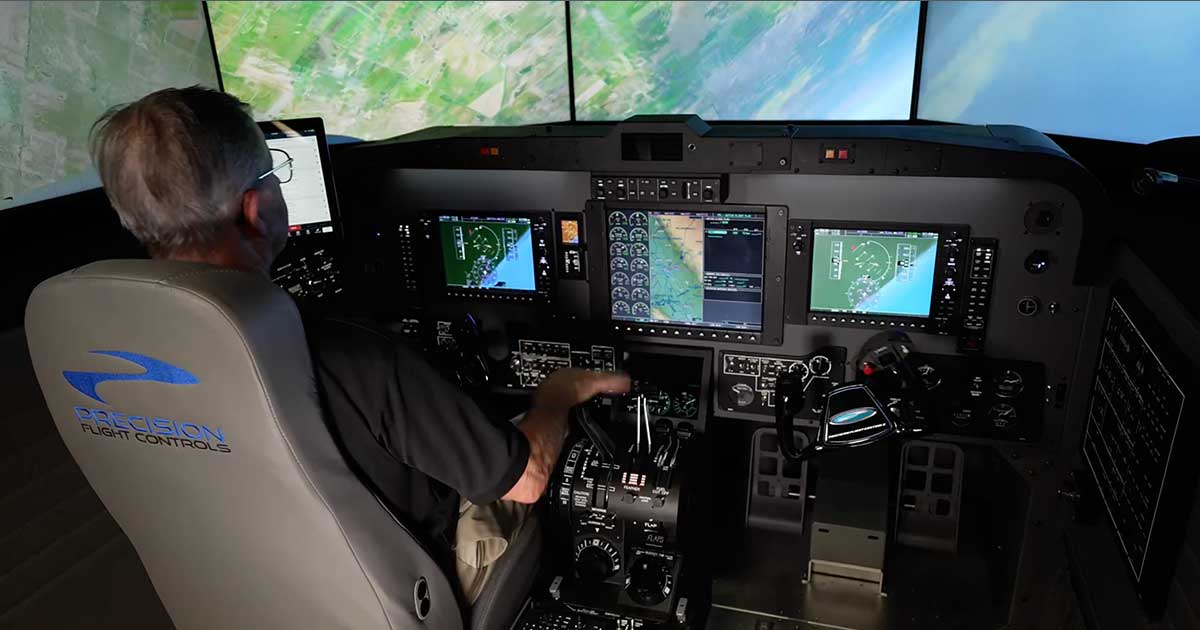
Emergency procedures training is crucial for pilots as it prepares them to respond effectively and decisively when faced with unexpected situations. By becoming proficient in managing various emergencies, such as engine or electrical failures and emergency descents, pilots enhance their ability to maintain control and ensure the safety of their aircraft and passengers. Training in a simulator provides a lower stress environment for students and certificated pilots to learn and practice aeronautical decision making applicable to emergency responses. Flight simulators offer a controlled and risk-free environment to practice these high-stress scenarios, enabling pilots to develop their decision-making skills and build confidence in handling real-world emergencies without putting themselves or their aircraft in danger.
Engine failures: Practice dealing with engine failures during takeoff, climb, cruise, and approach phases of flight.
Electrical failures: Understand the impact of losing electrical systems and how to troubleshoot and manage the situation.
Emergency descents: Learn proper techniques for rapid altitude loss in the event of an emergency, such as cabin decompression.
Simulators allow pilots to safely practice emergency scenarios, developing critical decision-making skills and building confidence in their ability to handle real-world emergencies.
Advanced Skills and Procedures
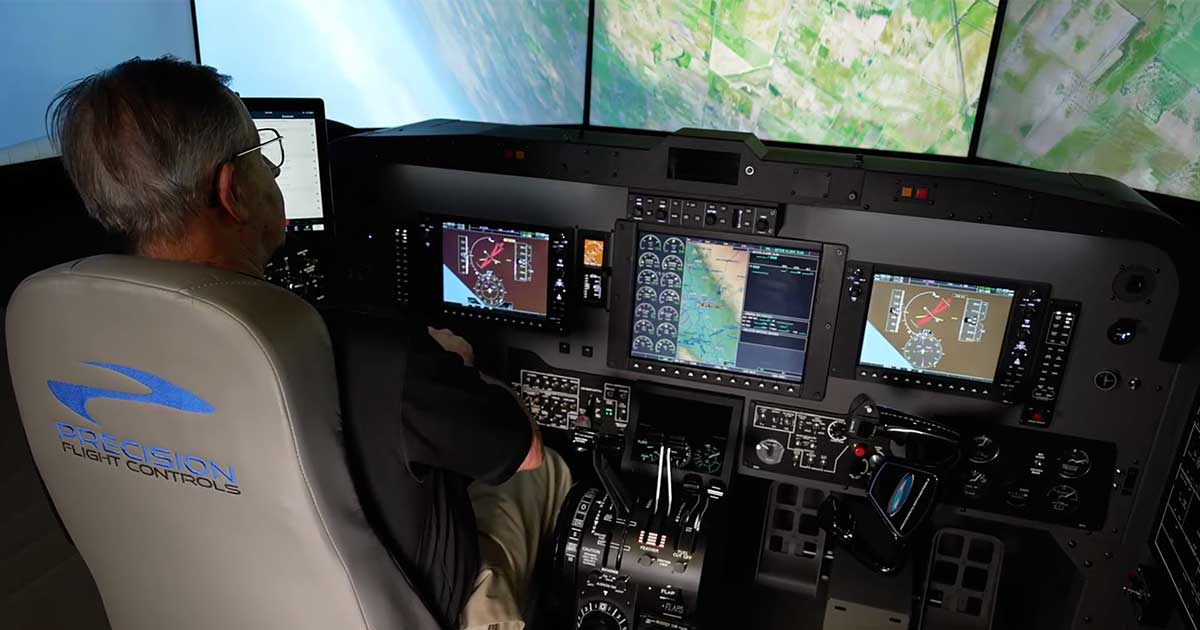
Instrument flight procedures
Instrument flight procedures are vital for pilots to navigate safely and efficiently under instrument meteorological conditions (IMC) when visibility is limited due to weather or other factors. By mastering instrument approaches, holding patterns, and partial panel flying, pilots develop the skills needed to maintain situational awareness and control during IMC. Flight simulators offer an ideal training platform, allowing pilots to practice these challenging procedures in a variety of conditions within a controlled and risk-free environment, ultimately building proficiency and confidence in their ability to handle real-world instrument flight situations.
Instrument approaches: Practice flying various types of instrument approaches (ILS, VOR, GPS) in different weather conditions.
Holding patterns: Learn to enter, maintain, and exit holding patterns, while managing navigation and communication tasks.
Partial panel: Practice flying with limited instrument availability, simulating instrument failures.
Simulators provide a controlled environment for practicing instrument flight, allowing pilots to build proficiency and confidence in their ability to fly in instrument meteorological conditions (IMC).
Navigation and Flight Planning
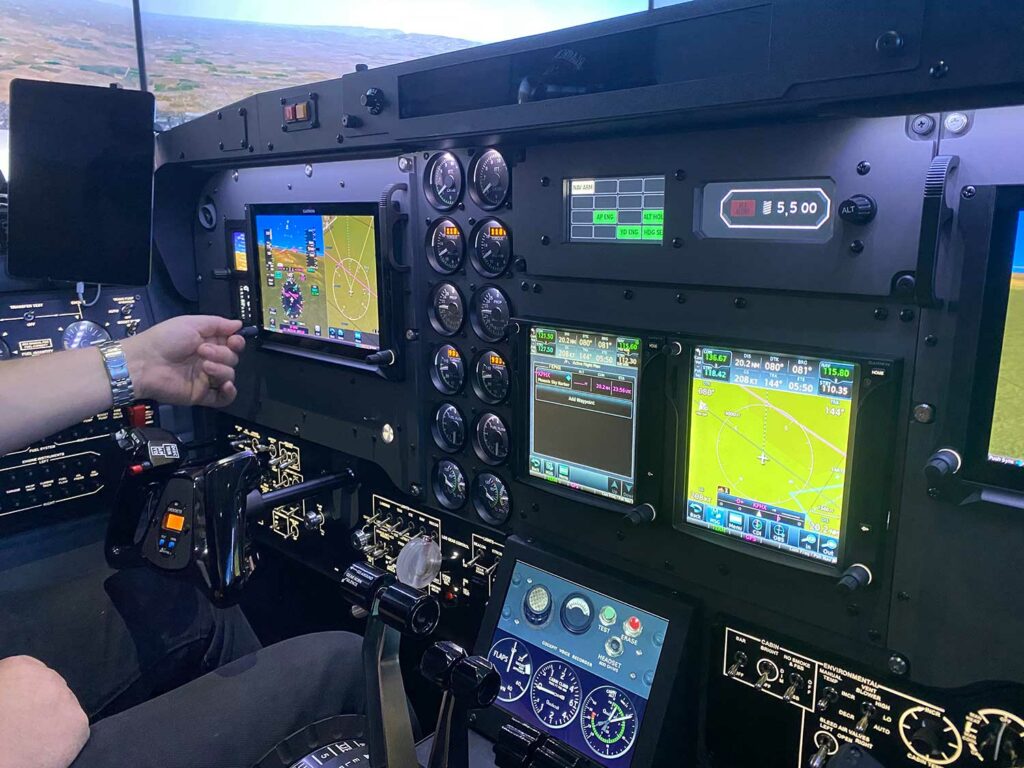
Navigation and flight planning are fundamental skills that ensure a pilot can efficiently and safely operate an aircraft from departure to arrival. Proficiency in VFR and IFR flight planning, radio navigation, and GPS navigation techniques is essential to accurately navigate through complex airspace systems and various weather conditions. Flight can be flown with very good results after the planning is complete. The visual systems and weather control can teach the student valuable skills before spending much larger amounts flying the aircraft. Flight simulators provide a valuable opportunity for pilots to hone their navigation and planning skills in a cost-effective and time-efficient manner, allowing them to gain experience and confidence in these critical aspects of flight before leaving the ground.
VFR and IFR flight planning: Plan, file, and fly simulated cross-country flights, practicing navigation techniques and airspace management.
Radio navigation: Master the use of VOR, DME, and ADF systems for navigation and tracking.
GPS navigation: Become proficient in using GPS and RNAV systems, including programming and executing flight plans.
Simulators offer the ability to practice navigation and flight planning skills without leaving the ground, saving both time and money.
Advanced Aircraft Systems
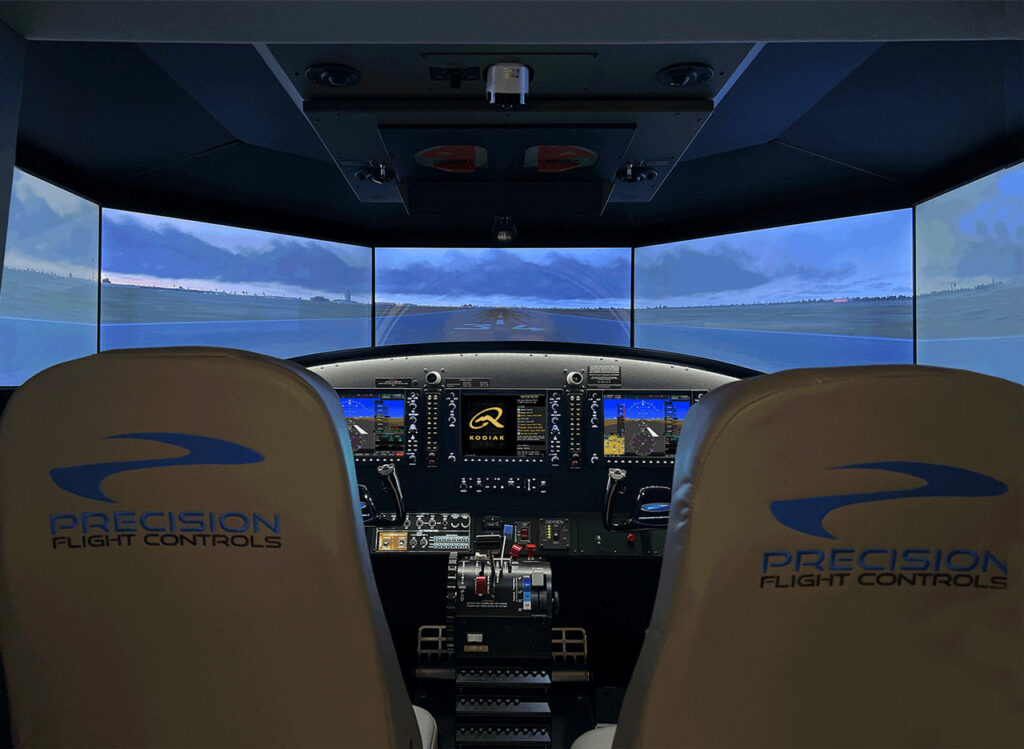
Advanced aircraft systems play a significant role in modern aviation, providing pilots with enhanced situational awareness, automation, and system management capabilities. Mastering the use of glass cockpit avionics, autopilot, and complex engine management systems is essential for pilots to safely and efficiently operate today’s sophisticated aircraft. Flight simulators offer the perfect platform to become proficient in these advanced systems, allowing pilots to learn and practice in a low-stress, controlled environment, ultimately building their confidence and efficiency in operating state-of-the-art aircraft.
Glass cockpit avionics: Learn to use advanced avionics systems like the Garmin G1000, building proficiency in managing complex aircraft systems.
Autopilot: Understand autopilot operation, including modes, limitations, and emergency procedures, to safely and effectively manage automated flight.
Complex engine management: Master the operation and management of complex engine systems, such as turbocharged, constant-speed, and FADEC-controlled engines.
Simulators provide an ideal training environment for learning and practicing advanced aircraft systems, allowing pilots to build proficiency and confidence without the stress and costs associated with real-world flight.

